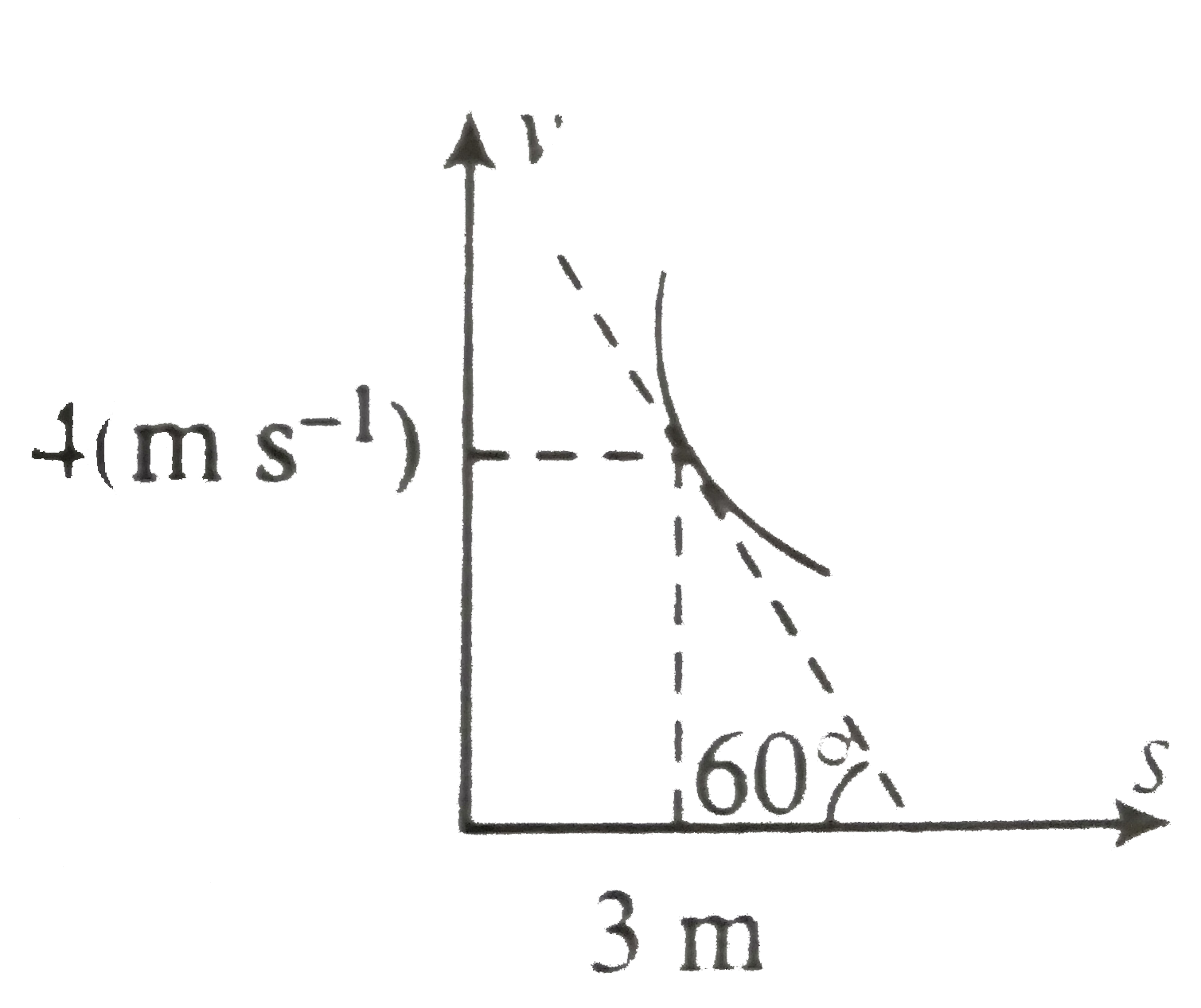A particle moves on a straight line with velocity 2 m/s covers a distance of 5 m, returns back to initial position along same path with velocity 4 m/s. The distance and displacement covered by particle are respectively.
10 m, zero
Zero, 10 m
5 m, 5 m
Zero, zero
The correct Answer is:A
To solve the problem, we need to determine both the distance and displacement covered by the particle as it moves along a straight line.
1. Initial Movement (O to P):
- The particle moves from point O to point P.
- Distance covered = 5 m (given).
- Since the particle moves in a straight line, the displacement is also equal to the distance in this case.
- Displacement = 5 m.
2. Return Movement (P to O):
- The particle then returns from point P back to point O.
- Distance covered during this return = 5 m (again, given).
- However, since it is returning to the initial position, the displacement for this segment is negative with respect to the original direction (assuming right is positive).
- Displacement = -5 m.
3. Total Distance Covered:
- Total distance = Distance from O to P + Distance from P to O.
- Total distance = 5 m + 5 m = 10 m.
4. Total Displacement:
- Total displacement = Displacement from O to P + Displacement from P to O.
- Total displacement = 5 m + (-5 m) = 0 m.
Final Results:
- Distance covered by the particle = 10 m.
- Displacement covered by the particle = 0 m.
Summary:
The distance and displacement covered by the particle are respectively:
- Distance = 10 m
- Displacement = 0 m
- The particle moves from point O to point P.
- Distance covered = 5 m (given).
- Since the particle moves in a straight line, the displacement is also equal to the distance in this case.
- Displacement = 5 m.
- The particle then returns from point P back to point O.
- Distance covered during this return = 5 m (again, given).
- However, since it is returning to the initial position, the displacement for this segment is negative with respect to the original direction (assuming right is positive).
- Displacement = -5 m.
- Total distance = Distance from O to P + Distance from P to O.
- Total distance = 5 m + 5 m = 10 m.
- Total displacement = Displacement from O to P + Displacement from P to O.
- Total displacement = 5 m + (-5 m) = 0 m.
- Distance covered by the particle = 10 m.
- Displacement covered by the particle = 0 m.
The distance and displacement covered by the particle are respectively:
- Distance = 10 m
- Displacement = 0 m
Topper's Solved these Questions
Similar Questions
A particle moves in a straight line for 20 seconds with velocity 3 m/s and then moves with velocity 4 m/s for another 20 seconds and finally moves with velocity 5 m/s for next 20 seconds. What is the average velocity of the particle ?
View SolutionA particle moving along a straight line with a constant acceleration of −4m/s2 passes through a point A on the line with a velocity of +8m/s at some moment. Find the distance travelled by the particle in 5 seconds after that moment.
View SolutionA particle moving along a straight line with a constant acceleration of −4m/s2 passes through a point A on the line with a velocity of +8m/s at some moment. Find the distance travelled by the particle in 5 seconds after that moment.
View SolutionA particle is moving along a straight line whose velocity - displacement graph is shown in figure. What is the acceleration when displacement is 3 m?

View SolutionA particle is moving on a straight line. Its velocity at time t is (8−2t)m/s. What is the total distance covered from t=0 to t=6s?
View SolutionA particle moves in a straight line with a uniform acceleration a. Initial velocity of the particle is zero. Find the average velocity of the particle in first 's' distance.
View SolutionPower of the only force acting on a particle of mass m=1 kg moving in straight line depends on its velocity as P=v2 where v is in m/s and P is in watt. If initial velocity of the particle is 1m/s, then the displacement of the particle in ln2 second will be :
View SolutionA particle starts from the origin, goes along x-axis to the point (10 m, 0) and then returns along. The same line to the point (-10 m, 0). The distance and displacement of the particle during the trip are
View SolutionA particle moving along a straight line with initial velocity u and acceleration a continues its motion for n seconds. What is the distance covered by it in the last nth second ?
View SolutionA scooter is moving along a straight line AB covers a distance of 360 m in 24 s and returns back from B to C and coveres 240 m in 18 s. Find the total distance travelled by the scooter.
View Solution
